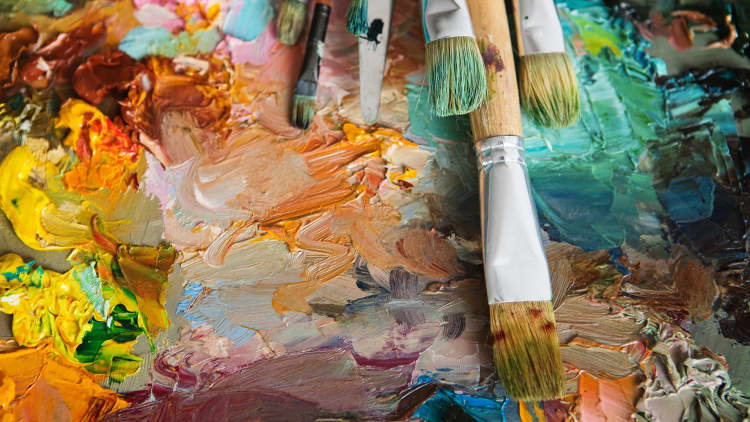
When a privately-held painting by Renaissance master Leonardo da Vinci went under the hammer for a record $450 million in November, many looked to China in search of its mystery buyer.
While the purchaser of the 500-year-old artwork "Salvator Mundi" ultimately proved to be a Saudi royal, the knee-jerk reaction toward China highlights the importance of the East Asian nation in the art market.
According to a report from Art Basel and UBS, China is the world's third-largest art market after the United States and the United Kingdom, accounting for 20 percent of total sales in the $57 billion global sector.
Only one decade ago, in 2007, China accounted for just 9 percent of total sales worldwide, according to the Art Basel report. That figure doubled in 2009 and reached the peak of 30 percent in 2011 before the recovering U.S. made a comeback.
Over at Christie's, total art buying from Asia went up 40 percent from a year ago in the first half of 2017, the auction house said. One-fifth of new art buyers also came from the continent. For the first time ever this year, Asia led global sales, the auction house said.
Given their big budgets, Chinese buyers are increasingly dominating the art investing world. Here's what they're looking for:
International 'blue chip fine art'
No surprises here. Rare classics by renowned masters like da Vinci and Vincent van Gogh are highly sought. That's particularly true because most of their works are owned by national museums and thus unlikely to be resold.
The recent record price for a da Vinci "is one more proof that blue chip fine art is big business and a great, unique way of investing where the value of your investment is only likely to appreciate," said Johnny Hon, chairman of venture capital firm The Global Group and an art investor himself.
Although the ultimate buyer came from the Middle East, the painting was taken to Hong Kong before it was auctioned off, underscoring the importance of the Chinese market, which is now "central to the international art market," added Hon.
Chinese classics and masters
China lost heaps of artwork in the last century due to historical turmoil, but now that the country is an economic power, the rich are buying back some of their heritage.
Ancient porcelain and old ink paintings are all fair game with major 20th Century Chinese ink painters Qi Baishi, Xu Beihong and Zhang Daqian drawing the big bucks.
On Dec. 18, a collection of 12 landscapes by Qi sold for 931 million Chinese yuan ($171 million) at a Beijing auction, setting a record for Chinese artwork sold at an auction worldwide, China Daily reported.
Last year, Zhang generated $31 million more in auction sales last year than abstract genius Pablo Picasso, according to French database Artprice, making the Chinese artist the top in auction turnover.
According to a report from art website Artnet and the China Association of Auctioneers, the market for Chinese art and antiques is moving toward Asia, with major auction houses shifting inventory to Hong Kong. In the category, 78 percent of the work was sold in Asia last year — up from 66 percent in 2011.
Art dealers tell CNBC that many of the transactions take place outside of the mainland and are increasingly stored overseas so as not to incur taxes and issues with Chinese customs.
Contemporary art
The value of contemporary art is harder to assess beyond top creators such as Cui Ruzhuo and Japanese superstar Yayoi Kusama, whose work sell for millions of dollars on the art market.
Chinese buyers have a healthy risk appetite and are not averse to putting their money in under-the-radar living artists in the hopes of reselling for higher prices later, art dealers told CNBC.
For art investors, it's not just about hoping for pieces to grow more valuable, but they're also worrying about not recording a loss on their purchases.
Singapore artist Yeoh Wee Hwee whose signature sculptures are often made of tape has faced numerous questions over why she uses the material whenever she exhibits in Asia. That is, the material's cheap price and relative impermanence may make the pieces a tough sell.
"In the U.K., that question never comes up, but in Asia and China, I get questions over why the material I use doesn't last," she told CNBC.

